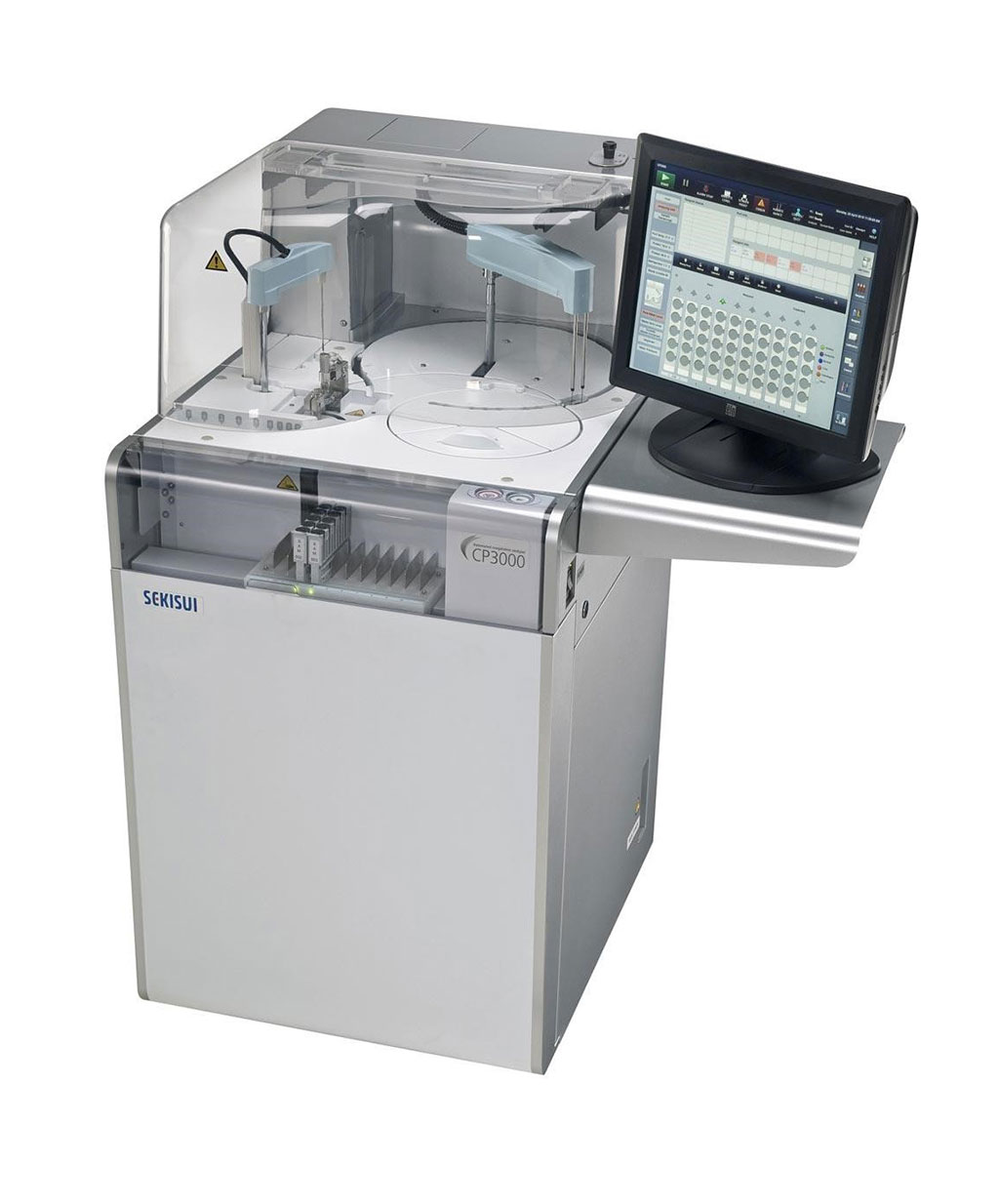Multiple Coagulation Parameters Predict Postoperative Bleeding Volume in Cardiovascular Surgery
By LabMedica International staff writers
Posted on 02 Dec 2021
Coagulopathy and massive bleeding are severe complications of cardiovascular surgery, particularly occurring after procedures requiring prolonged cardiopulmonary bypass (CPB). During surgery massive transfusion of blood products may become necessary.Posted on 02 Dec 2021
Reliable and predictive laboratory tests on coagulation function will help guide clinicians to appropriate transfusion and possibly decrease variability in transfusion practices. Appropriate coagulation parameters would help to predict bleeding after cardiovascular surgery and measuring multiple coagulation parameters may prove useful.

Image: The CP3000Automated Coagulation System measures various coagulation factors (Photo courtesy of Sekisui Medical Company)
Medical Laboratorians at the Asahikawa Medical University Hospital (Asahikawa, Japan) and their colleagues in a prospectively study collected cohort of 48 patients undergoing cardiovascular surgery from November 2015 to March 2016. They examined the association between coagulation parameters and bleeding volume. The median age of the cohort was 69 years, 29 males and 19 females and all were ethnically Asian.
The team measured prothrombin time (PT) or activated partial thromboplastin time (APTT) and fibrinogen (Fib) with the Coapresta2000 automated analyzer (coagulation one-stage assay (Sekisui Medical Company, Tokyo, Japan). Activities of coagulation factor II (FII), FV, FVII, FVIII, FIX, FX, FXI and FXII were measured with Sekisui Medical Company’s Coapresta3000. α2 Plasmin inhibitor (α2PI, synthetic substrate assay), antithrombin (AT, synthetic substrate assay), thrombin-antithrombin complex (TAT, chemiluminescent enzyme immunoassay) and FXIII activity (synthetic substrate assay) were measured using the STACIA automated analyzer (LSI Medience Corporation, Tokyo, Japan).
The scientists reported that bleeding volume during surgery was 2,269 (174–10,607) mL. Number of transfusion units during surgery were packed red blood cells 12 (0–30) units, fresh frozen plasma 12 (0–44) units, platelets 20 (0–60) units and intraoperative autologous blood collection 669 (0–4,439) mL. Post-surgery activities of coagulation factors II (FII), FV, FVII, FVIII, FIX, FX, FXI and FXII were decreased. Values of fibrinogen, antithrombin, α2 plasmin inhibitor (α2PI) and FXIII were also decreased. Values of thrombin-antithrombin complex (TAT) were increased. Values of FII, FIX, FXI and α2PI before surgery were negatively correlated with bleeding volume. Level of FIX after surgery was negatively correlated with bleeding volume and level of TAT after surgery was positively correlated with bleeding volume.
The authors concluded that FII, FIX, FXI, FXIII and α2PI are associated with postoperative bleeding volume. Diluted coagulopathy, decrease in stabilized fibrin due to decrease in FXIII and hyperfibrinolysis due to decrease in α2PI may contribute to hemostatic defect. Thrombin burst due to operative stress as represented by increase in TAT values may also contribute to hemostatic defect. The study was published on October 9, 2021 in the Thrombosis Journal.
Related Links:
Asahikawa Medical University Hospital
Sekisui Medical Company
LSI Medience Corporation




 assay.jpg)









